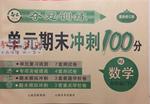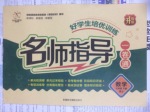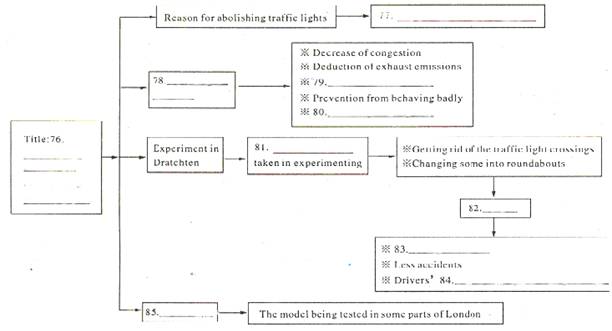题目内容
There are numerous similarities between Muhammad Ali and his 23-year-old daughter Laila. She is the only one of his nine sons and daughters to have those genes that led to the ring (拳击场). Her father’s great status had nothing to do with Laila’s decision to pursue a boxing career. She has always been proud of his achievements, but he was never a great man to her ---- just dad.
What attracted her to take up boxing was the unusual sight of two women in the ring on the television screen when she was about to watch a Mike Tyson fight five years ago. She was very excited and said to herself, “I can do that.”
Laila’s father would prefer her not to take up the dangerous sport. Johnny McClain, her husband and manager (former boxer himself) feels the same way. Even though both the men in her life worry about her, they’re 100 percent supportive. “They don’t want me to get hurt,” she says.
Long before entering the ring, Laila was a fighter. Being the daughter of an outstanding boxer made her an easy target for high school kids to see how tough she was. They, not she, failed in the test. For the public, her biggest test took place last summer in the New York State when she took on Jacqui Frazier Lyde, the daughter of Joe Frazier, her father’s most famous opponent (对手) during the 1970s.
That fight provided the biggest shot in the arm that women’s boxing has received. News reporters poured in. Some called it “Ali/Frazier – Generation II”. No match involving women had ever attracted so much attention. Laila had a narrow victory in the fight.
Like it or not, she accepts the fact that she is the face of female boxing. And she hopes that her name and fame will help get the public to take it more seriously.
The name Ali has and always will bring her attention. But she is determined to make her own mark on opponents’ faces as well as in boxing history books. She says, “I want women’s boxing to get its due respect.”
- 1.
Laila took up boxing because of ______.
- A.her father’s great status
- B.a Mike Tyson fight
- C.her admiration for her father
- D.her interest in boxing
- A.
- 2.
From the passage we can know ______.
- A.Laila’s husband is still a boxer now
- B.Laila wants to make contributions to the sport of boxing
- C.Laila’s husband doesn’t think boxing is a dangerous sport
- D.when Laila was in high school, she often failed in the fight with other kids
- A.
- 3.
What does the underlined sentence in Paragraph 5 mean?
- A.That fight proved that Laila was a person of physical power
- B.That fight made female boxing more popular
- C.That fight provided people with a good change to enjoy themselves
- D.Laila made her first public appearance in that fight
- A.
- 4.
Which of the following would be the best title for the passage?
- A.A female boxer ---- Laila Ali
- B.The best-known fight
- C.Ali/Frazie ---- Generation II
- D.Muhammad Ali and his daughter
- A.
DBBA
试题分析:这篇文章主要讲了世界拳王阿里女儿继承父业。
1.根据She was very excited and said to herself, “I can do that.”故选D。
2.根据And she hopes that her name and fame will help get the public to take it more seriously.故答案应为B。
3.根据News reporters poured in. Some called it “Ali/Frazier – Generation II”. No match involving women had ever attracted so much attention. Laila had a narrow victory in the fight.故选B。
4.根据全文内容以及She says, “I want women’s boxing to get its due respect.”,故选A。
考点:人物传记类短文阅读理解
点评:本题型考查了对文章段落或某一板块的理解概括能力。先阅读问题,然后带着问题,再读全文,找出答题所需要的依据,完成阅读。在词义与句义理解的基础上,结合上下文总结归纳某一段或几段的大意,对于把握文章主旨,分析全文结构都是至关重要的。纵观历年高考试题,阅读理解试题一般有以下几种题型:一是直接回答who, whom, which, what, where, when, why, how等疑问词引起的细节问题;二是猜测词义题;三是推理判断题;四是综合概括题。在做阅读理解题时,一定要仔细看完,看清楚试题要求再作答,特别要注意NOT,TRUE,EXCEPT等词。有时,要先看题,后阅读文章,带着问题去读短文,可缩短阅读时间,效果也许会更好。
试题分析:这篇文章主要讲了世界拳王阿里女儿继承父业。
1.根据She was very excited and said to herself, “I can do that.”故选D。
2.根据And she hopes that her name and fame will help get the public to take it more seriously.故答案应为B。
3.根据News reporters poured in. Some called it “Ali/Frazier – Generation II”. No match involving women had ever attracted so much attention. Laila had a narrow victory in the fight.故选B。
4.根据全文内容以及She says, “I want women’s boxing to get its due respect.”,故选A。
考点:人物传记类短文阅读理解
点评:本题型考查了对文章段落或某一板块的理解概括能力。先阅读问题,然后带着问题,再读全文,找出答题所需要的依据,完成阅读。在词义与句义理解的基础上,结合上下文总结归纳某一段或几段的大意,对于把握文章主旨,分析全文结构都是至关重要的。纵观历年高考试题,阅读理解试题一般有以下几种题型:一是直接回答who, whom, which, what, where, when, why, how等疑问词引起的细节问题;二是猜测词义题;三是推理判断题;四是综合概括题。在做阅读理解题时,一定要仔细看完,看清楚试题要求再作答,特别要注意NOT,TRUE,EXCEPT等词。有时,要先看题,后阅读文章,带着问题去读短文,可缩短阅读时间,效果也许会更好。

练习册系列答案
 夺冠训练单元期末冲刺100分系列答案
夺冠训练单元期末冲刺100分系列答案 新思维小冠军100分作业本系列答案
新思维小冠军100分作业本系列答案 名师指导一卷通系列答案
名师指导一卷通系列答案
相关题目
